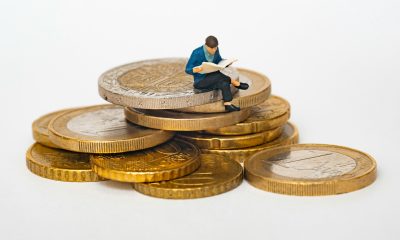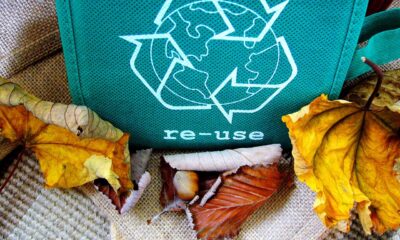Crowdfunding
Real estate crowdfunding in Italy is increasingly attracting investors
The positive trend in real estate in 2019 continued undeterred during the COVID-19 emergency, which indeed favored the birth of new platforms. An area with a social impact is that of urban regeneration, where the real estate component combines social interest. Lending crowdfunding also offers new possibilities to ensure the survival of those economic activities heavily penalized by the emergency.

New digital platforms, an unprecedented impact component and increasingly attractive real estate. The legacy of the Covid19 emergency shows a renewed face of crowdfunding that, even during the lockdown, never stopped attracting projects and investors, both for lending and equity. Obviously due to the fluctuating trend of the markets that pushed investors to also look at alternative finance.
“In this period, there has been a strong push towards digitization – explained Alessandro M. Lerro, president of the Italian Association of equity crowdfunding (Aiec) – During the lockdown, new platforms have been conceived, especially in real estate, which will be launched by the summer.”
Read more about the development of the real estate crowdfunding sector and be the first to find out the latest business news with our companion app, Born2Invest.
The impact paradigm
In the last year, there was an interest in a social component or a green approach. Now the signs are more evident. The latest in order of time is that of Mamacrowd, the first Italian equity crowdfunding platform that has chosen G311 – Green Living, the project that proposes a new post-lockdown housing concept (gardens, large spaces, shared services) and aims to raise up to $4.94 million (€4.4 million).
“By now the watchword is sustainability. In the pipeline of new platforms we are starting to talk about impact and there are projects in this direction. Think, for example, of the financing of the tax bonus, which allows you to recover expenses for energy efficiency – explained Lerro – With the Dl relaunch has been increased to 110%. Companies can no longer count on a down payment. For this reason, crowdfunding lending projects are being set up to support companies that work in energy efficiency by financing the initial part of the work. This type of initiative is part of the impact because it has a positive impact on the environment and the social fabric.”
An area with a social impact is that of urban regeneration, where the real estate component combines social interest. “There will be room for redevelopment processes as long as there is an underlying business model that is favorable for retail investors with limited risk appetite and who need a certain return. Now a redevelopment project is even more interesting if the investor himself lives in the territory on which the project insists. The return is not only a financial return: that investor knows that his investment has a relapse close to his territory. We are seeing for example in lending projects in the energy sector that have to do with communities.”
It is precisely the energy communities that will be at the basis of a revolution supported by the latest European directives. These are communities where the production and/or consumption of energy is shared. They will also enhance the territories also flatfome as Ener2crowd which proposes investments with differentiated rate of return depending on whether investors are in the place where the intervention takes place or not.
The relaunch of activities
Lending crowdfunding also offers new possibilities to ensure the survival of those economic activities heavily penalized by the emergency. “We are starting to think about an interesting profile of the crowd economy, which is not only a financial phenomenon but also a marketing one – continued Lerro – . For example, let’s take one of the sectors most affected by the Covid19 crisis, which is the catering sector. Let’s imagine a restaurateur who wants to relaunch the business with funding through the crowdfunding platforms. Here he could set up a campaign not only on raising money against interest rate but on the loyalty of investors, who can be his customers, his local community. It could create an engagement with a beneficial effect that goes beyond mere borrowing but has a positive impact on the territory.”
The race of real estate
The positive trend in real estate in 2019 continued undeterred during these months of the year, which indeed favored the birth of new platforms. The latest Bridge Asset and others are ready for launch, both in equity and lending.
“We have passed the lockdown working on new platforms that are now making their debut. – explained Lerro – There has been a significant increase in projects, mostly in the real estate sector. We are developing an offer with more structured and better-explained projects. You can expect more and more informative and more in-depth platforms because not only the demand is increasing but also the level both in terms of investment amount and sophistication of the investor.” Lerro cited the Italian equity record set on the Backtowork24 platform by Finnovia: a $8.54 million(€7.6 million) campaign, conducted in partnership with Intesa Sanpaolo. The average investment was over $33,700 (€30,000).
Both the offer and the demand are growing. That is due to the fact that, unlike other areas such as technology, investment in real estate is easier for the retail investor to understand and the risk is lower due to the presence of a real estate asset.
__
(Featured image by Free-Photos via Pixabay)
DISCLAIMER: This article was written by a third party contributor and does not reflect the opinion of Born2Invest, its management, staff or its associates. Please review our disclaimer for more information.
This article may include forward-looking statements. These forward-looking statements generally are identified by the words “believe,” “project,” “estimate,” “become,” “plan,” “will,” and similar expressions. These forward-looking statements involve known and unknown risks as well as uncertainties, including those discussed in the following cautionary statements and elsewhere in this article and on this site. Although the Company may believe that its expectations are based on reasonable assumptions, the actual results that the Company may achieve may differ materially from any forward-looking statements, which reflect the opinions of the management of the Company only as of the date hereof. Additionally, please make sure to read these important disclosures.
First published in IlSole24ORE, a third-party contributor translated and adapted the article from the original. In case of discrepancy, the original will prevail.
Although we made reasonable efforts to provide accurate translations, some parts may be incorrect. Born2Invest assumes no responsibility for errors, omissions or ambiguities in the translations provided on this website. Any person or entity relying on translated content does so at their own risk. Born2Invest is not responsible for losses caused by such reliance on the accuracy or reliability of translated information. If you wish to report an error or inaccuracy in the translation, we encourage you to contact us.

-

 Biotech6 days ago
Biotech6 days agoVytrus Biotech Marks Historic 2024 with Sustainability Milestones and 35% Revenue Growth
-

 Crowdfunding2 weeks ago
Crowdfunding2 weeks agoColombia Approves Terrenta’s Crowdfunding Platform for Real Estate Financing
-

 Crypto16 hours ago
Crypto16 hours agoRipple Launches EVM Sidechain to Boost XRP in DeFi
-

 Africa1 week ago
Africa1 week agoCôte d’Ivoire Unveils Ambitious Plan to Triple Oil Output and Double Gas Production by 2030
























